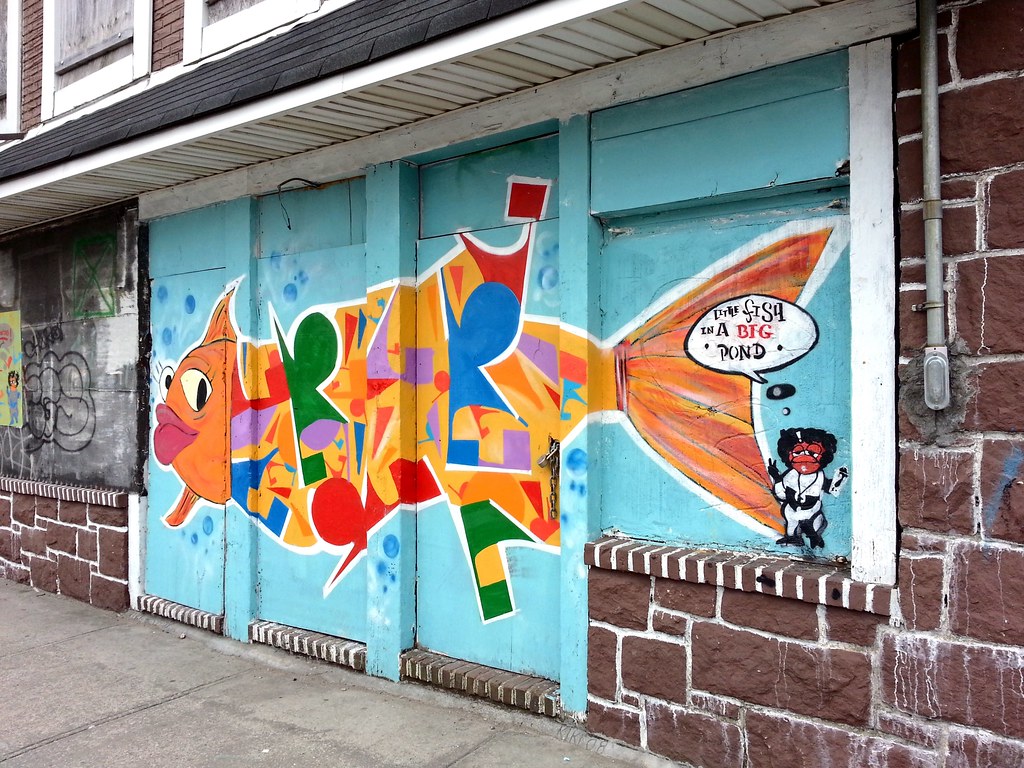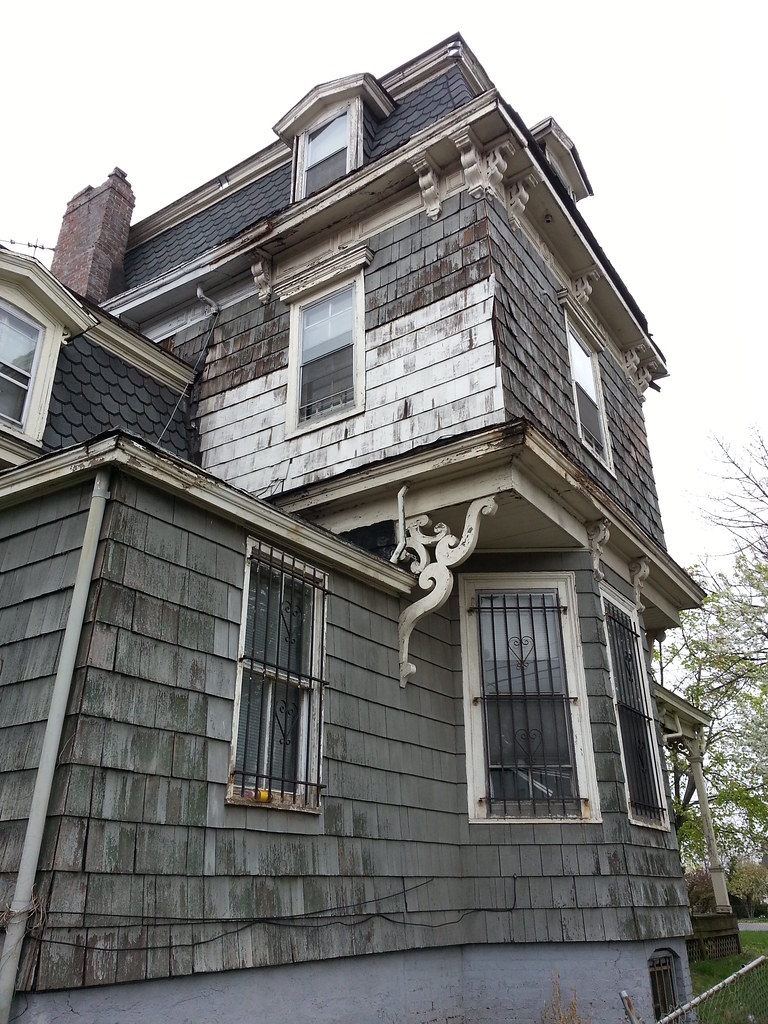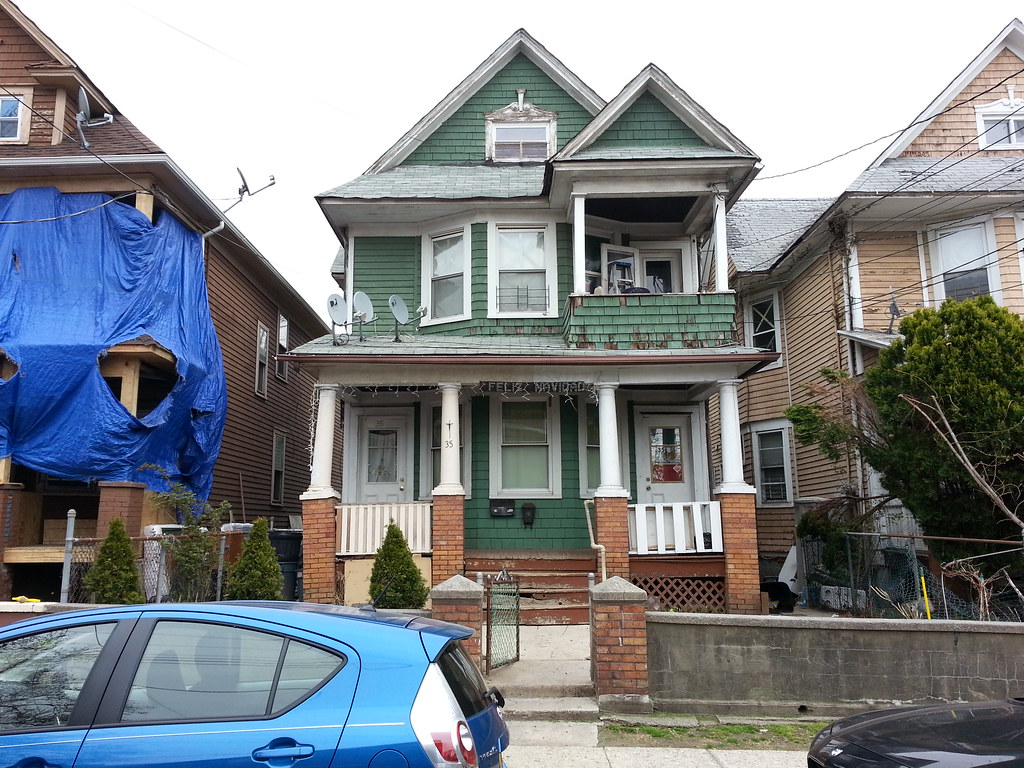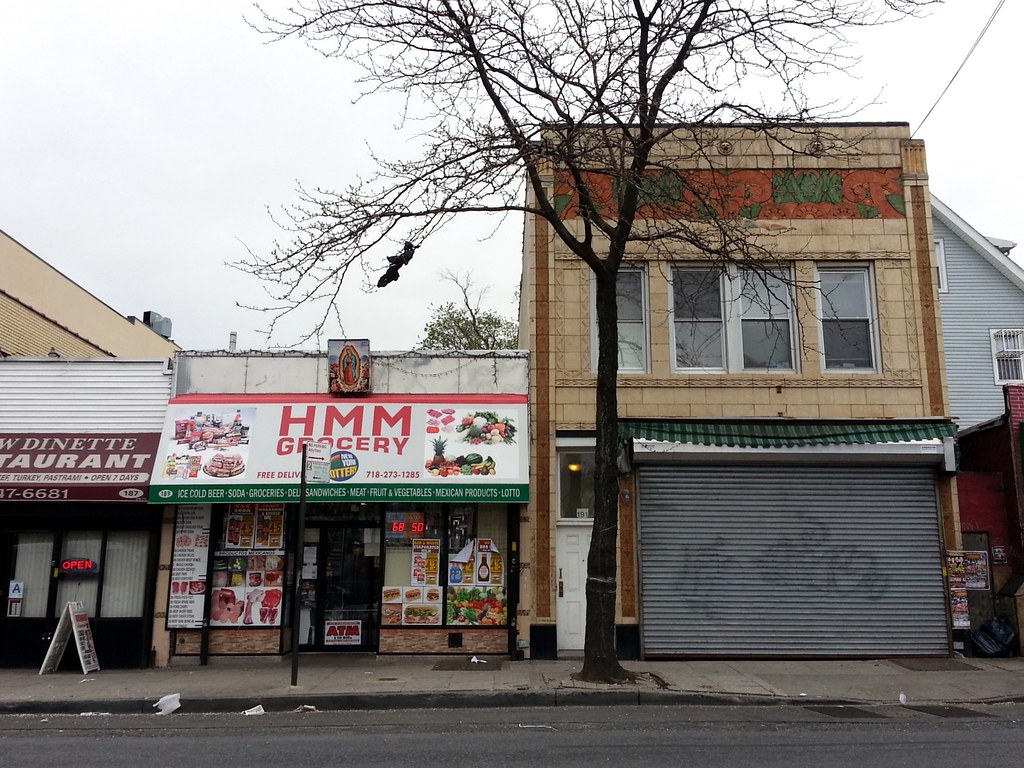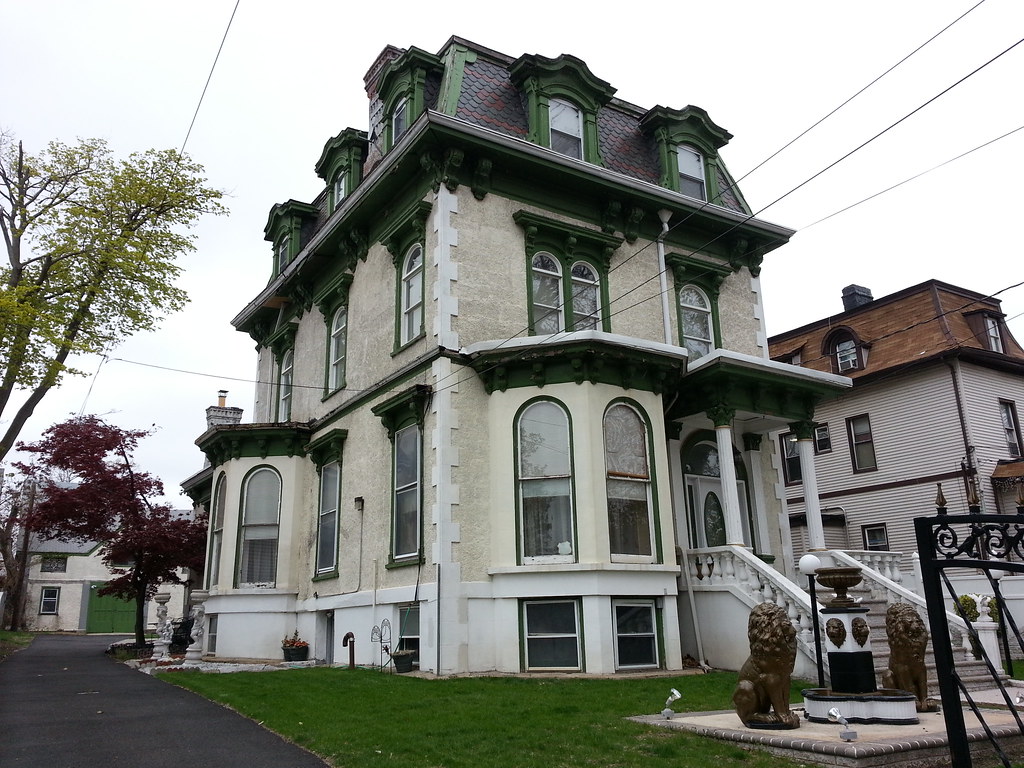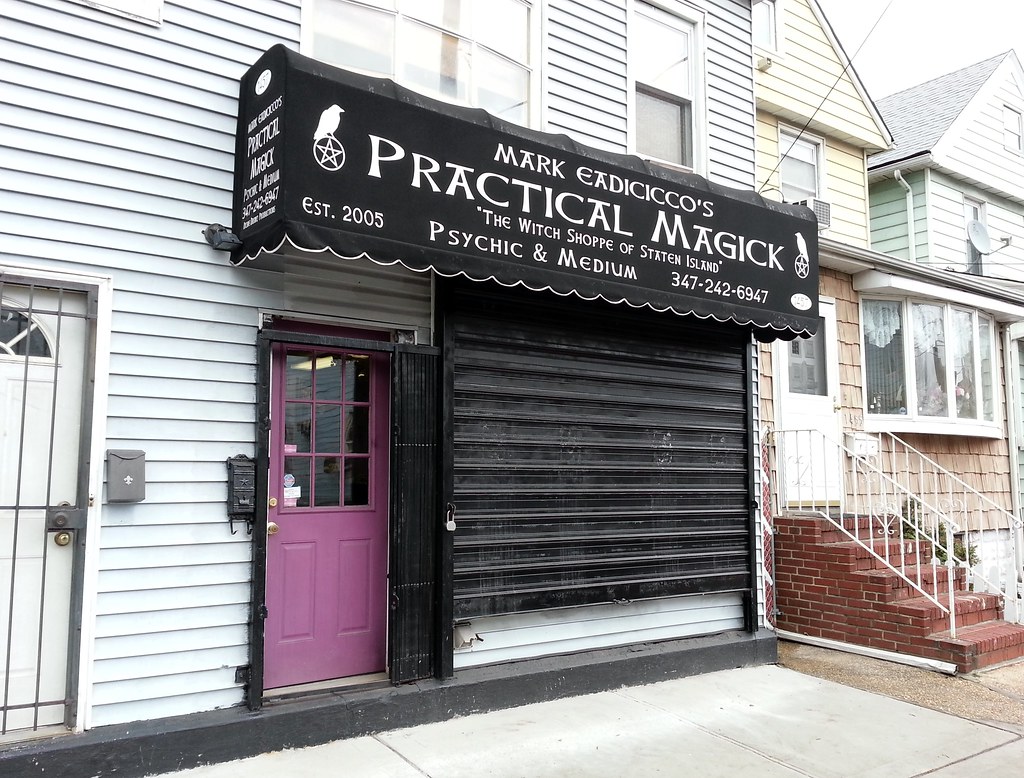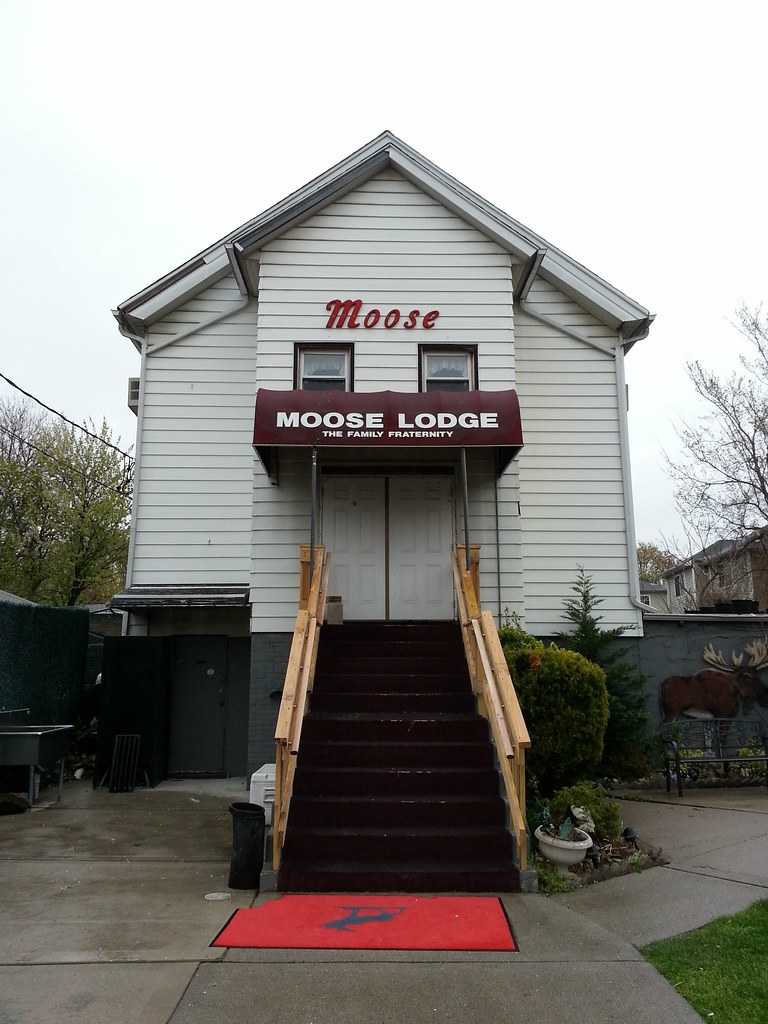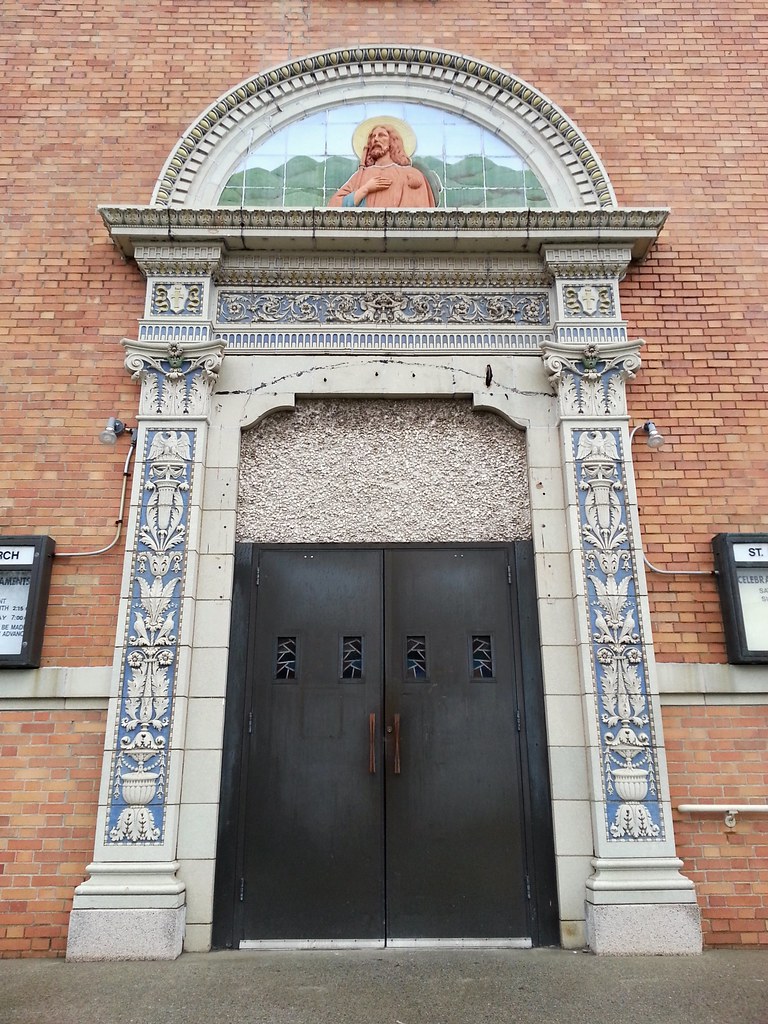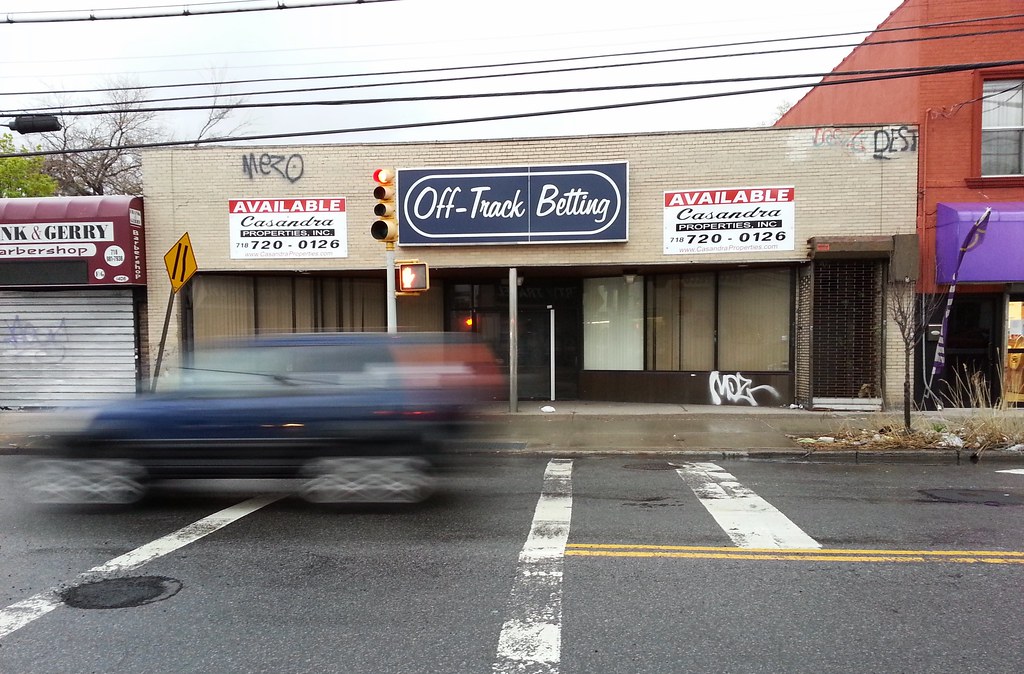
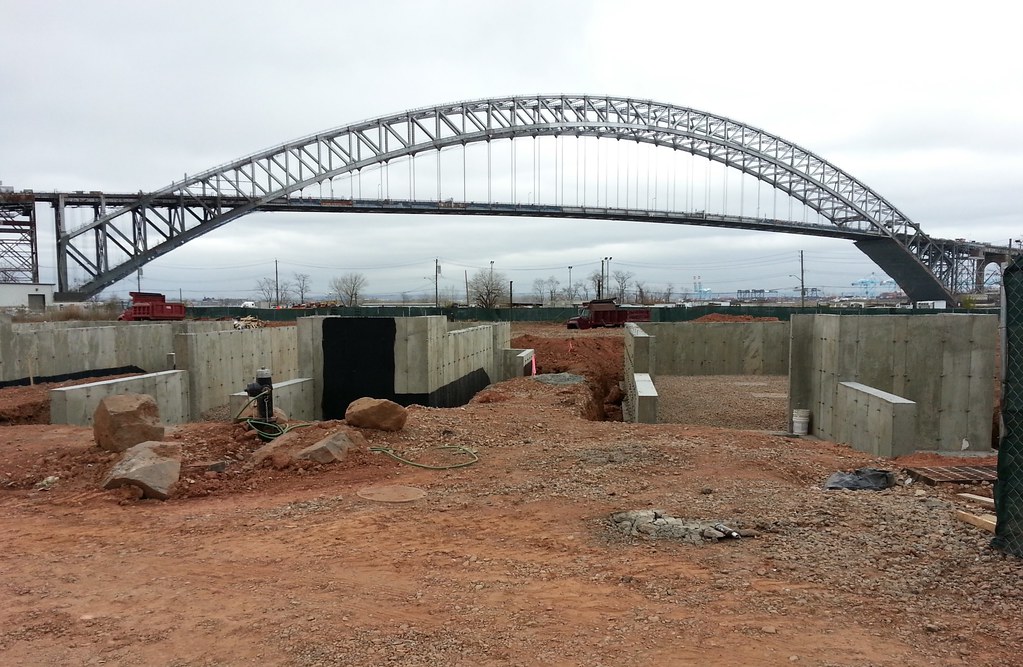
Homes-to-be rise in the foreground; meanwhile, work is now underway to raise the roadway of the Bayonne Bridge 64 feet to accommodate the larger ships that will be navigating the Kill van Kull once the expansion of the Panama Canal is complete.
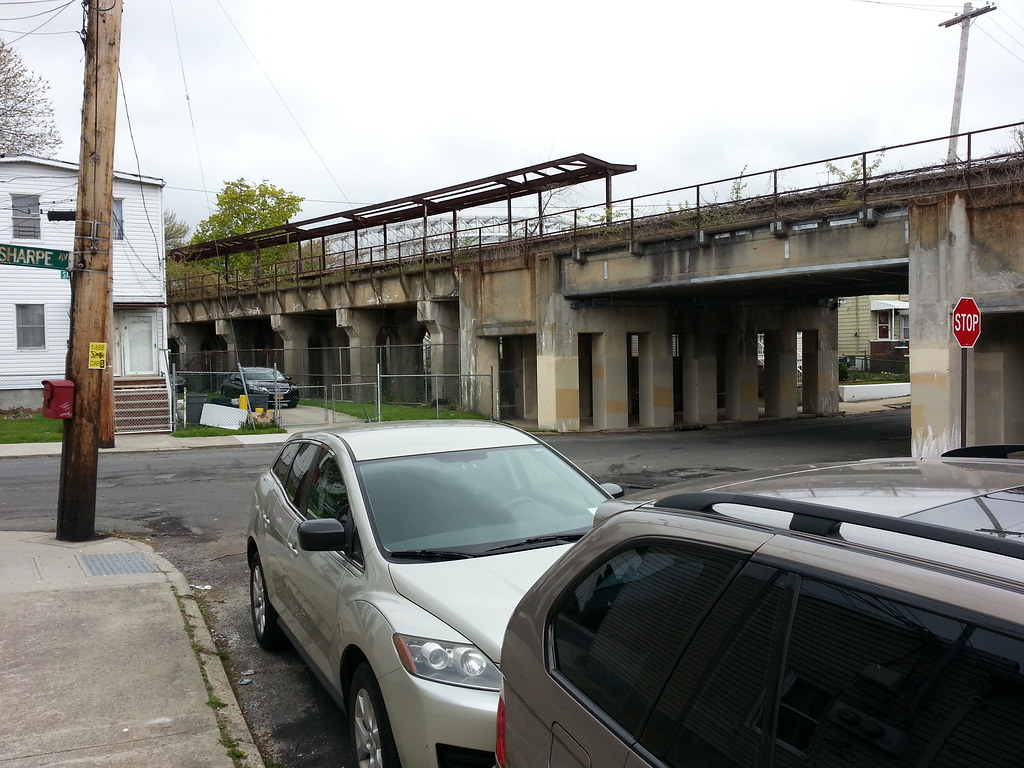
The Tower Hill station on the abandoned North Shore branch of the Staten Island Railway

Winner of a 2014 Historic Treasure award from the Preservation League of Staten Island
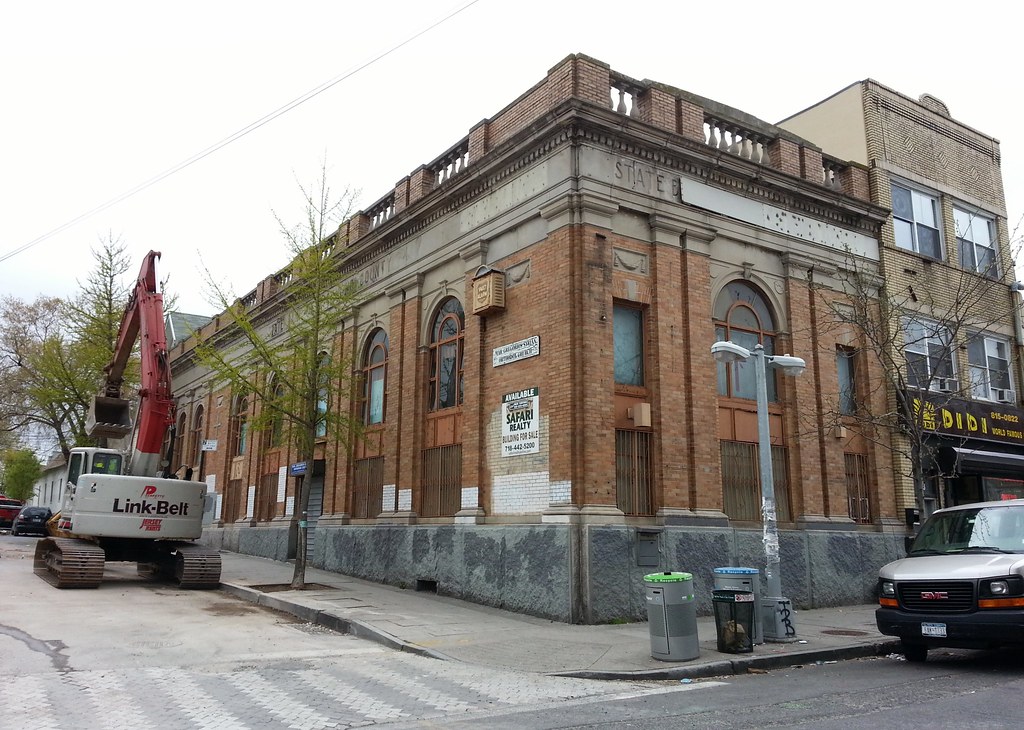
This old bank, with its vault alarm still in place, is now occupied by Mar Gregorios Syrian Orthodox Church, established in 1975 as the first Malankara (Indian) Syrian Orthodox parish in North America.

This church was constructed in 1844, but its congregation is much older — the oldest on Staten Island, in fact. Its earliest members began worshiping together in 1665, and later built their first church, on this site, in 1715.

Located on the north side of the church, this is the oldest section of the cemetery. It was in use as a family burial ground by 1705, predating the construction of the first church on the site by at least a decade. The oldest gravestone found here dates to 1746.

Named Germania when it was launched in 1892, this tugboat (closer look) has been stranded here at the northern end of Port Richmond Avenue for at least a decade. (It was apparently in better shape and being restored as recently as the early to mid-1990s.) Right beside it, you can see the last remains of an old wooden barge that had also been grounded here for quite some time. The barge caught fire a few years ago, and what was left of it has deteriorated even further since then.
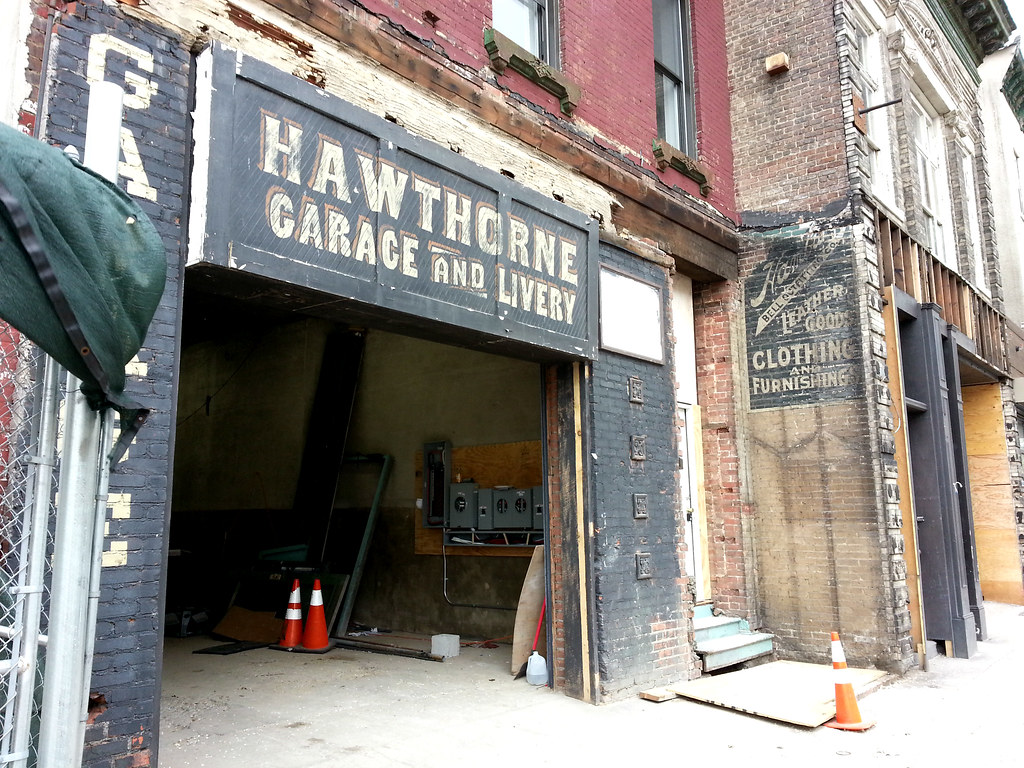
This is likely part of a set for Boardwalk Empire, which has filmed on this very block. (We also saw a former Boardwalk Empire set earlier this month in Sunset Park.) It's certainly not an actual historic establishment, at any rate, although the fading painted sign at right (close-up) looks to be authentic, uncovered as these storefronts were being given a makeover. Check out the transformation of this block, especially the buildings just south of here, between January and August of last year.

All Saints Church of Christ in God, originally Port Richmond National Bank. You can still see the night depository slot (closer look) in the bottom left corner of the left-most first-floor window! It was around 1909 that the bank built this addition to its 1870s building next door (which, like the former State Bank of Richmond County we saw earlier today, still has an ancient burglar alarm mounted on its facade).
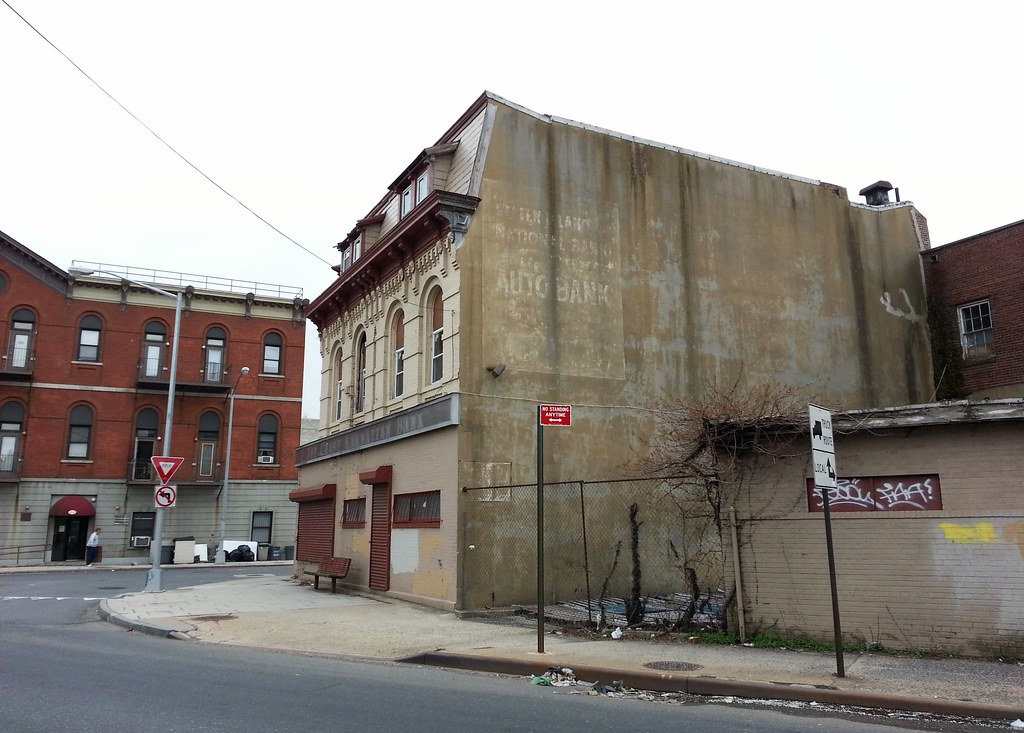
This view of the old Port Richmond National Bank reveals some of the institution's later history. The fading sign painted on the wall boasts that auto banking — I assume that means drive-through banking — is available at Staten Island National Bank, which is what Port Richmond National was renamed in 1926. (As recently as last year, "Staten Island National Bank & Trust Company" was still visible on the frieze of the building addition seen in the previous photo.) Meanwhile, the ghost letters on the horizontal band running across the building between the first and second floors read "Chase Manhattan Bank"; Staten Island National merged with Chase in 1957.
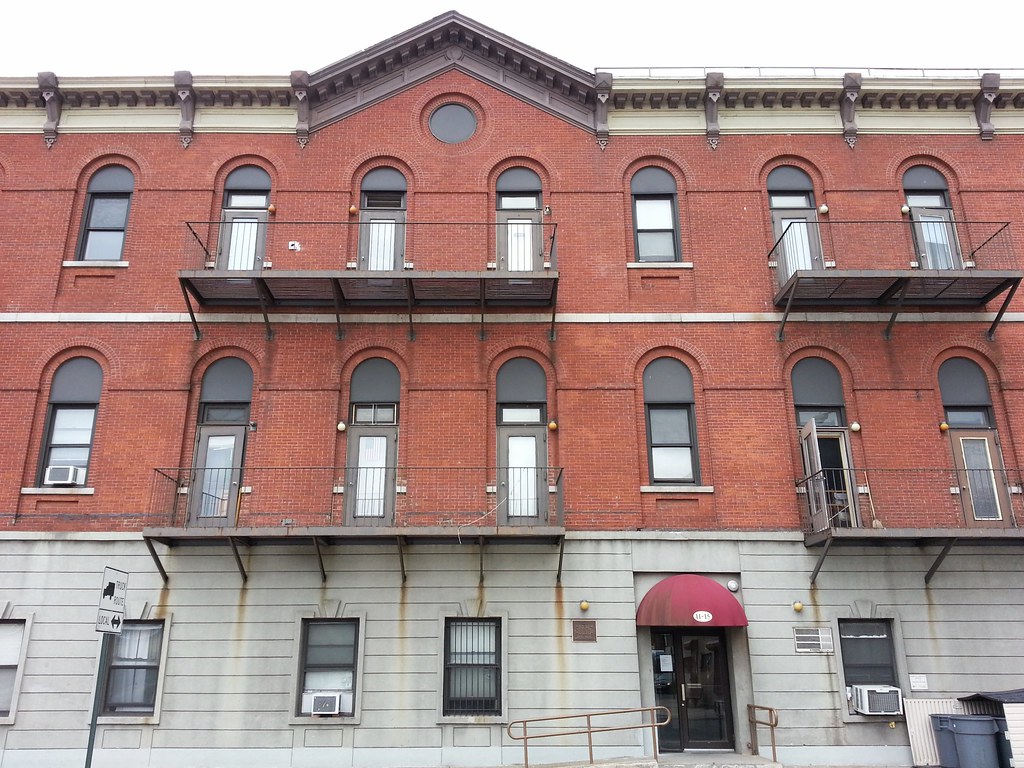
This 1875 structure was erected by Charles E. Griffith, who opened a boot and shoe store on the ground floor. Having seen several different uses over the years — here's a photo of an old pool hall, complete with spittoons, that was once located on the second floor — the building currently serves as a senior housing facility.
The plaque to the left of the door, visible above, reads:
ON THIS SITE STOOD THEThat's not quite correct, however. The St. James Hotel actually stood next door, just to the east on Richmond Terrace. It was originally a private mansion, supposedly considered "the finest house on Staten Island", and it was built on the former site of a small British Revolutionary War fort, which itself had replaced a house, belonging to an "obnoxious" loyalist, that was destroyed by the Americans. As far as I can tell, the place was known as the Port Richmond Hotel, or Winant's Inn, at the time that the elderly former vice president and killer of Alexander Hamilton (Dick Cheney wasn't the first veep to shoot a man while in office) was living out his last months there.
ST. JAMES HOTEL
BUILT SHORTLY AFTER
THE AMERICAN REVOLUTION.
AARON BURR DIED HERE
SEPTEMBER 14, 1836
ORIGINALLY MARKED BY
STATEN ISLAND CHAPTER NSDAR
FEBRUARY 1932 REPLACED SEPTEMBER 1976
Here's a watercolor painting of the inn as it would have looked during its time as the Continental Hotel (it went by a number of different names over the years) in the mid-1800s. And here's a view of Richmond Terrace, probably from the early 20th century; you can see the inn, then named Danner's, standing just past the Griffith Building, which at that point was the Schlitz Hotel.
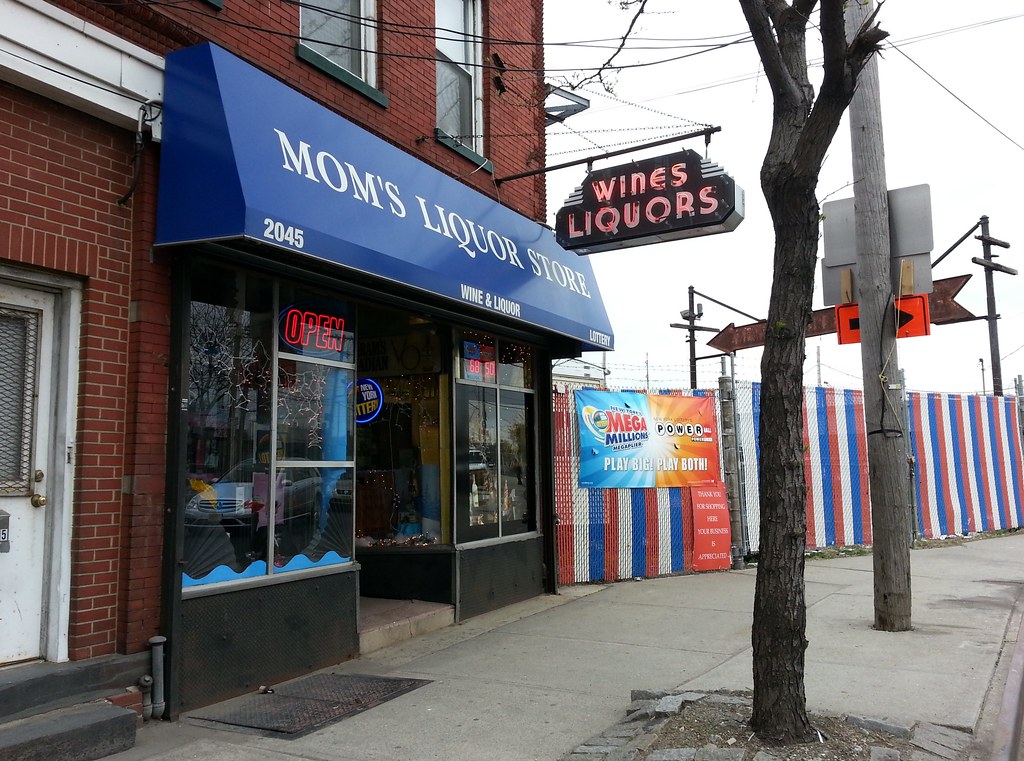
Sounds so wholesome!
The big rusty arrow in the background is a relic of the long-defunct ferry service that preceded the Bayonne Bridge in connecting Staten Island to Bayonne, New Jersey.
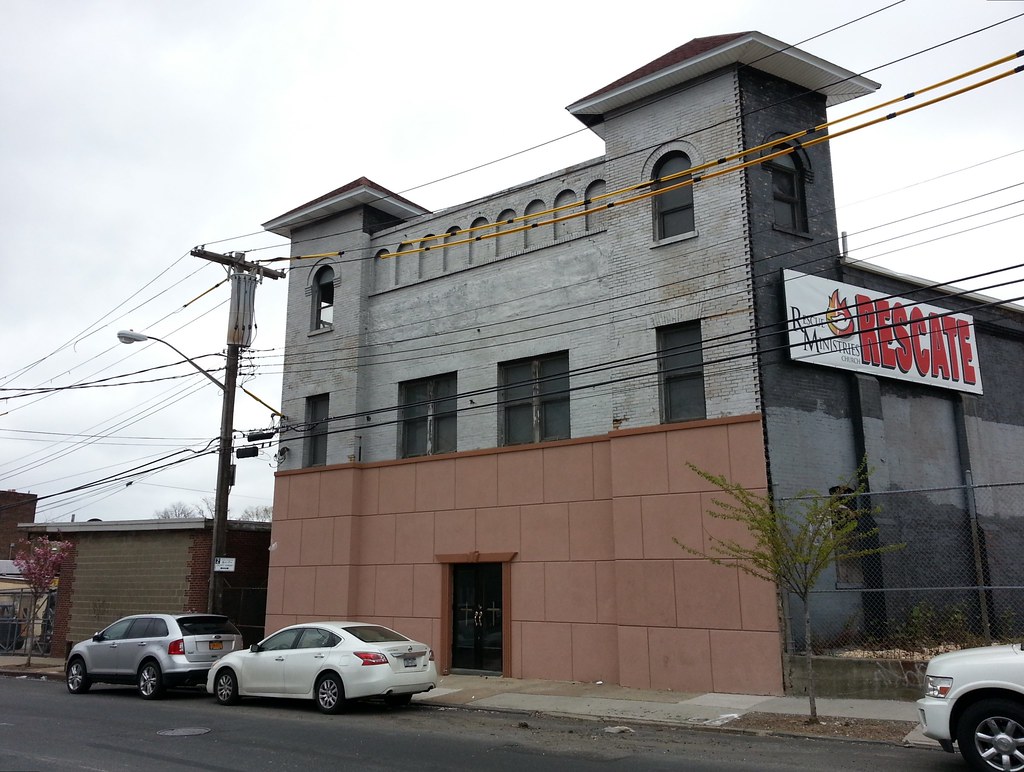
From movie palace to porno theater to lumber storehouse to church

Beneath the veil lies the former Public School 20 Annex, now the Parkside Senior Apartments. This side of the building was an 1897-98 addition to the original 1891 structure, which began its life as Northfield Township's District School 6. (The school was renamed when Staten Island became part of NYC in 1898.) Take a look around in Street View to see the place without all the scaffolding.

Staten Island's oldest park has elevated levels of arsenic and lead — so don't eat the soil.
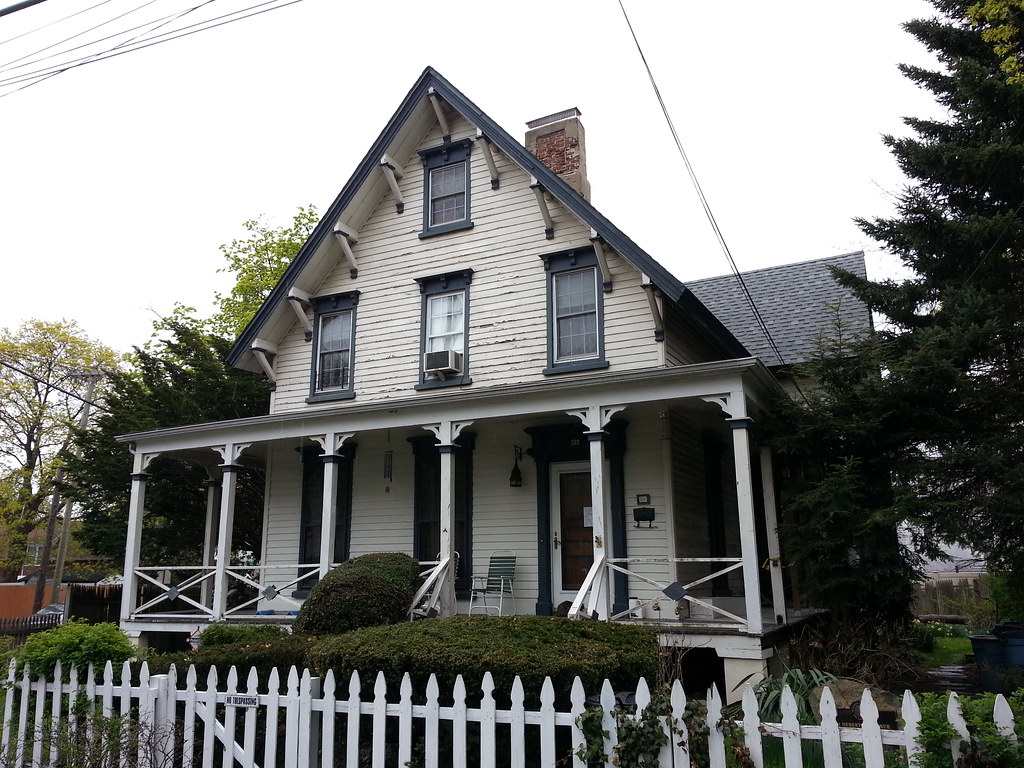
"This residence, constructed by carpenter-builder James G. Burger around 1859-61, is a rare surviving example in New York City of a picturesque villa in the Rustic style."

Thanks to this drinking fountain, we're still talking about Eugene G. Putnam, former principal of PS 20, more than a century after his death.
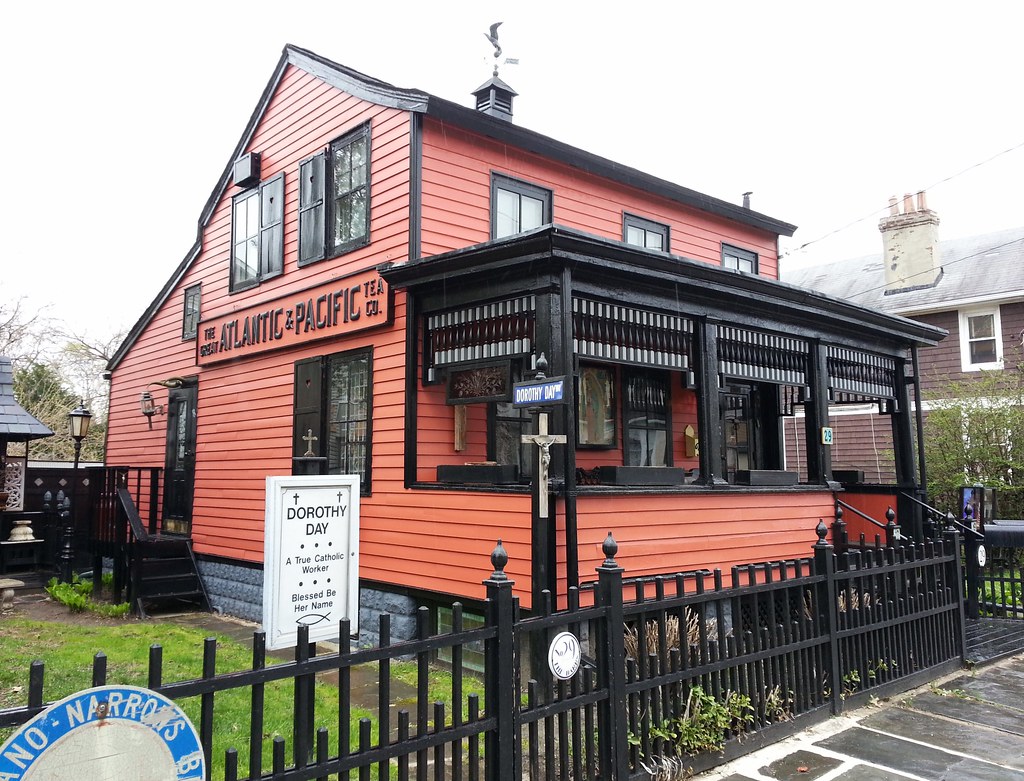
"One of the few surviving saltbox houses on Staten Island’s North Shore, this modest two-story Greek Revival frame cottage [built around 1848] with later Craftsman details is a significant reminder of Staten Island’s vernacular architectural traditions."
For almost 30 years, this house has been owned by John Foxell, an "artist, writer and self-confessed eccentric" who has painstakingly renovated the formerly dilapidated building and has added two small structures, a "prayer house" and a "spirit house", to the property. Mr. Foxell has also spent a great deal of time decorating the place to suit his particular tastes:
Many items might strike a more squeamish man as simply grisly — for example, the pair of glass-fronted coffins containing skeletons; a necklace made of human bones; a box containing children's teeth. Hollow-eyed skulls peer out from shadowy corners.You can see some interior photos here and here.
Yet these memento mori do not offend.
"They remind us that we're just a stack of bones, that we're just passing through," Mr. Foxell said. "I'm not put off by them. They're good company."
He is prepared for emergencies as well as the hereafter. Off the kitchen, home to a 1934 ball-top General Electric refrigerator and a 1951 stove, is a pantry stocked with items like canned creamed possum. "Survival food," Mr. Foxell said.

Relatively speaking, at least.
This is Palmer's Run, a.k.a. Bodine Creek (map).

A museum/gallery of sculptures created from scrap metal and car parts by a former auto mechanic. More pictures here and here.
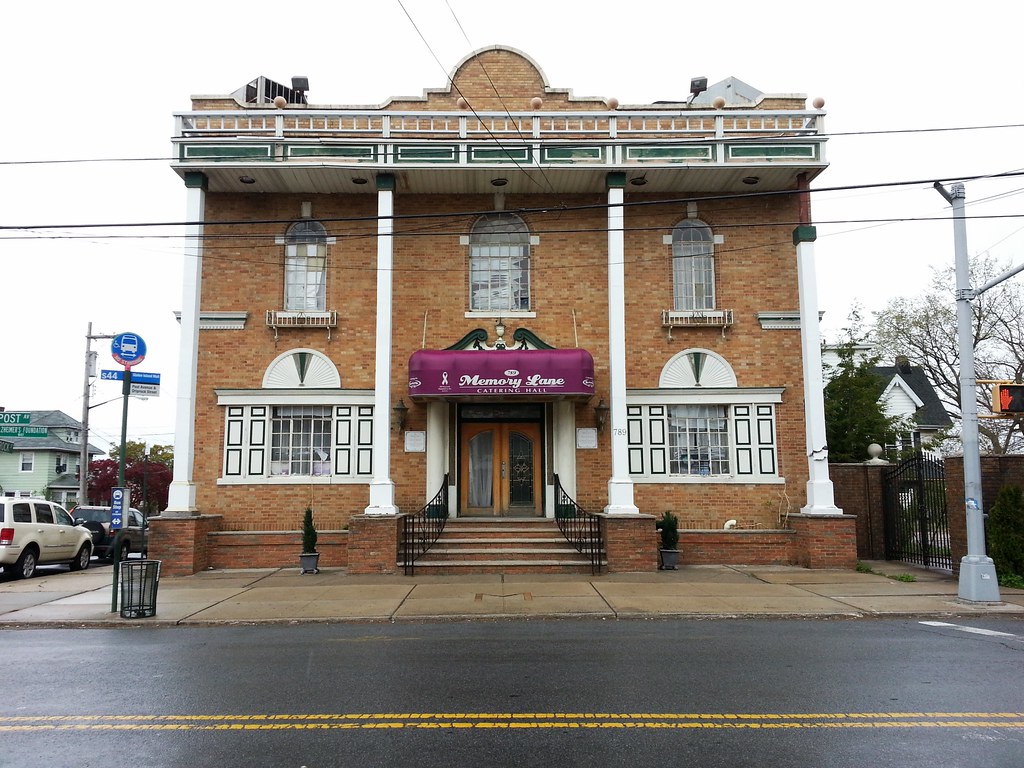
This catering hall is owned and rented out by the Alzheimer's Foundation of Staten Island. (Or at least it was — the organization has had some financial problems in recent years and the place looks a little too neglected to be an active event space.) The building was formerly, at least as far back as the early 1930s, known as Svea Hall, named for the Swedish fraternal organization that built it. It later served as a Masonic temple and then as the Mandalay catering hall before becoming Memory Lane.

on the abandoned North Short branch of the Staten Island Railway. You can see the skeleton of the platform shelter still standing on top of the viaduct. The short brick building at right looks like it could have once been the station house, although I can't find any evidence that it actually was. If I'm reading this page correctly, Kevin Walsh identifies it as a former public restroom. For what it's worth, this 1936 photo (found here) shows that the building dates back at least as far as the elevated station itself.
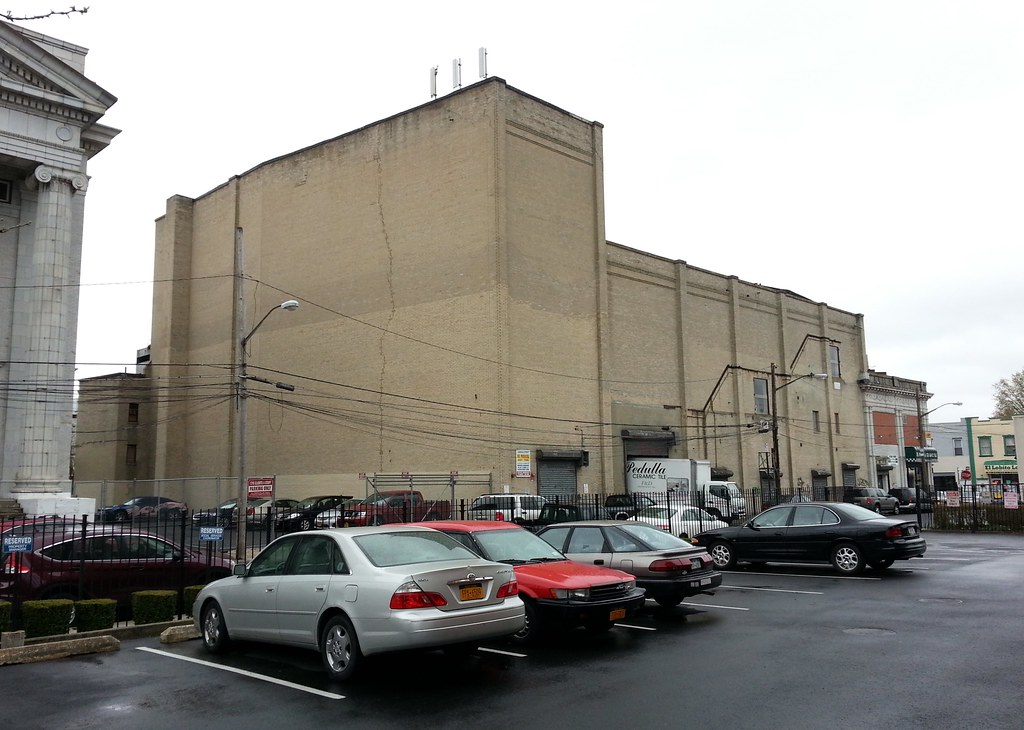
The Ritz "was one of three theaters that earned Port Richmond the nickname 'Times Square of Staten Island.' Built in 1924, the town's most ornate and most expensive theater held more than 2,100 seats. Audience members could watch movies or vaudeville shows accompanied by the Ritz Orchestra. Double features cost 20¢ in 1948."
In the 1970s, the Ritz became a venue for big-name rock shows, much like another seemingly out-of-the-way old theater we've crossed paths with: the old Loew’s 46th Street in Borough Park. Some of the acts that played here at the Ritz: Jethro Tull, Jefferson Airplane, Black Sabbath, the Kinks, Procol Harum, Captain Beefheart, the Allman Brothers, Alice Cooper, Yes, Humble Pie, King Crimson, and Don McLean.
The theater was later transformed into a roller-skating rink before taking on its current role as a tile showroom in the mid-1980s.

Dedicated as a Masonic temple in 1926, this building served as the headquarters for an Army antiaircraft unit during World War II.

by Robert Adzema. Instructions here. (Step 1: Make the sun come out.)


